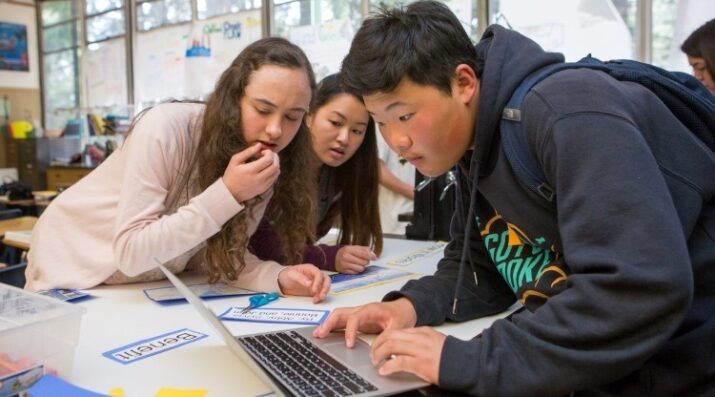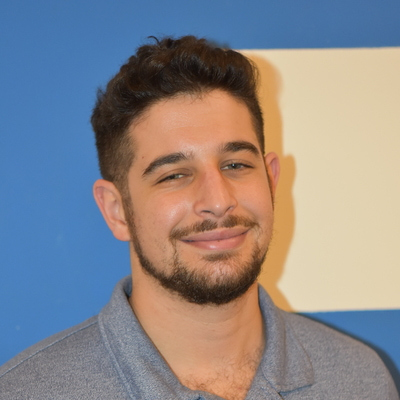Achieving Authentic Learning Through a Major Classroom Culture Shift
Topics

We’ve all had the experience of truly purposeful, authentic learning and know how valuable it is. Educators are taking the best of what we know about learning, student support, effective instruction, and interpersonal skill-building to completely reimagine schools so that students experience that kind of purposeful learning all day, every day.
This D.C. teacher designed a tech-driven blended learning model for his class—one that’s self-paced and mastery-based, with promising results.
For three years, I followed a traditional teaching model: one teacher delivers all the content to a diverse set of learners. My students, regardless of their learning style, prerequisite skills, and personal preferences, were expected to learn at the same pace—and in the same environment—as all their peers. The flaws of this one-size-fits-all model were exacerbated by poor foundational skills, tardiness, and truancy, leaving students disengaged and frustrated by the inaccessibility of the content. I knew something had to change.
So, I designed, tested, and implemented a three-part technology-driven classroom model that creates a blending learning environment—one that’s self-paced and constructs a mastery-based approach to learning. The model enables me to refocus my attention on crafting a personalized learning experience for all students. As a result of this shift, I have seen an increase in attendance, a decrease in behavior issues, and a renewed commitment to mathematics. Here are the three key components.
The self-paced classroom allows students to build skills, no matter their proficiency or speed of learning.
1. Blended Learning
Replacing Lectures with Content Videos
Education technology frees the teacher to engage in honest discussion, remediation, and re-teaching. In my class, students learn novel content by watching self-made video lessons individually at their own pace. To develop my videos, I translate the key concepts of my content standards to a comprehensive PowerPoint with a series of paced animations. I then use a screencasting program to record my lecture over the slides. I upload my videos to Edpuzzle and embed questions to ensure students can actively engage with the information. By developing my own content videos to replace lectures, students no longer rely on me to access the information. Instead of managing a class-wide discussion at a prescribed pace that fails to meet each student’s unique needs, I instead facilitate individual and small group instruction, evaluate student mastery, and provide consistent feedback to my students.
When students are responsible for consuming their own content, they are less inclined to be wasteful with their time. This reduces behavioral issues, truancy, and attendance. Students who arrive to class ready to learn are not impeded by their peers. Students who struggle to focus or have been absent from class now have the capacity to pause or review the lesson to ensure full understanding. The shift from lectures to videos has ultimately adjusted the focus of my class from the teacher to the learner.
2. Self-Paced
Accessing Content When Students are Ready
By transitioning my lectures to videos, I now have a self-paced classroom that prioritizes self-direction and autonomy. Students who need more time on a lesson and additional remediation can continue working on the same skill, while their peers can be on cruise-control three lessons ahead. Bottom line: students can access content when they are ready.
In many high school classrooms, though, teachers keep moving regardless of student performance. But it is unreasonable to expect a student to engage in content that they are not ready for. In the context of a math class, it almost guarantees poor performance. If parents started teaching toddlers how to run before they could walk, we would call them crazy. But when a student does not show mastery of a skill in a math class, we just teach them the next one.
The self-paced classroom allows students to build skills, no matter their proficiency or speed of learning.
3. Mastery-Based Learning
Rewarding Students for Authentic Learning
By removing lectures and facilitating self-paced access to content, I have shifted from completion grading to mastery-based grading.
The backbone of my class model is detailed grading and live data analysis. Students cannot work at their own pace and experience mastery-based learning if they are not receiving immediate feedback. I display a pacing guide at the front of the class that keeps track of each student’s progress through the course. For a student to move forward to the next lesson, they must show mastery on the previous lesson. Each lesson in my classroom ends with an exit ticket, assessing a skill from a video lesson and subsequent assignment.
When students do not master a concept, they are instructed to revise, perhaps by reviewing a video or seeking personalized help from me. I reassess them until they have proven success. Once students have demonstrated comprehensive mastery, the pacing guide is updated to reflect their success. The most powerful learning occurs when students revisit their work; in my experience, a culture of revision, reassessment, and mastery is evidence of an authentic learning experience.
Photo courtesy of Allison Shelley/The Verbatim Agency for American Education: Images of Teachers and Students in Action.




